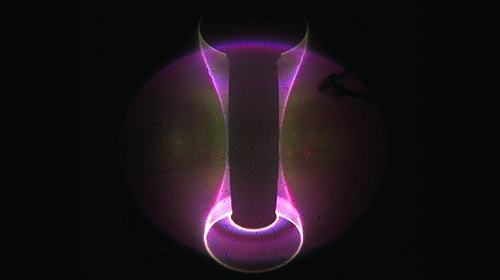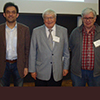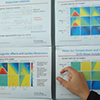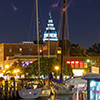
Project Sherwood and the origin of the annual Sherwood Fusion Theory Conference
Research into controlled thermonuclear fusion energy began in the United States around 1951 within various departments of the nuclear weapons program under the auspices of the Atomic Energy Commission (AEC). Throughout the 1950s, fusion technology was seen as a potential source of energetic neutrons which could be used to breed fissile material for nuclear weapons and thus, remained under the veil of classification [Bishop, p. 77]. Around the end of 1953, the US fusion research effort was formally organized under the codename “Project Sherwood.” At that time, funds from a recently closed wartime project at the Massachusetts Institute of Technology Hood building were being reallocated to Jim Tuck at Los Alamos Scientific Laboratory for fusion research into the pinch concept. AEC director of the Division of Research, Thomas Johnson, coined the name “Sherwood”, when commenting in a planning discussion “Since we are robbing Hood to pay for Friar Tuck I would say that we are in Sherwood Forest. Let's call the project ‘Project Sherwood’” [Bromberg, p. 44].
The first meeting under what was to be named Project Sherwood was held in June of 1952 in Denver, Colorado. This conference, and a following one held during April of 1953 in Berkeley, California, were both organized by Johnson. The 1953 meeting concluded with a roundtable discussion focused on the existing research situation and ideas for future effort. The discussion was led by E. Teller, L. Spitzer, E. McMillan, R. Post, J. Tuck, and M. Johnson [Bishop, 76]. By 1954 research had intensified after the formal organization of the project, and a Steering Committee of leading experts (many of whom sat on the roundtable discussion) from each institution involved in the work was formed. The committee reported directly to Johnson and provided recommendations on the overall coordination of fusion research. Progress was gauged through meetings, which were held with increasing frequency, up to three times per year [Bishop, p. 79]. The meetings were proceeded by one or two days of talks given, and attended by, members of the fusion research community. Multiple committee meetings per year meant that the research pace was hectic. At one meeting, results were phoned in during a presentation [Bromberg, p. 41]. The meeting locations were also somewhat informal. For example, the February 1957 meeting, again in Berkeley, was held in a movie theater. During the day, the building was cleared for the secret conference, but at night opened to the public with a double feature: The Men of Sherwood Forest, and Top Secret Affair [Johnson].
Near the end of the 1950s, the motivation for the secrecy surrounding controlled fusion research deteriorated. Fission reactors had been built and information concerning their design was being declassified, and controlled fusion was proving more difficult than the optimistic estimates earlier in the decade had foretold [Bishop, p. 157, Bromberg, p. 72]. For both reasons, the official concern that fusion neutrons might be used to breed fissile material was no longer great enough to warrant classification. The public release of information related to controlled fusion research by the various countries involved did not happen all at once [Bishop, p. 157-159]. However, by September 1958, declassification of fusion information was extensive if not complete, when scientists from around the world met for the first time in Geneva, Switzerland at the second International Conference on the Peaceful Uses of Atomic Energy, to openly share their fusion energy research. Following the Geneva conference, the first unclassified Sherwood meeting was held during the Spring of 1959 in Gatlinburg, Tennessee under the name Conference on the Theoretical Aspects of Controlled Fusion Research. The meeting was hosted by Oak Ridge Laboratory, and had only about thirty attendees. Gatlinburg then was a tiny town and the conference was held in a hotel, which was hard pressed to find a slide projector. When the hotel did eventually find one, it projected the old-fashioned two-and-a-half-inch square glass slides, and the organizers had to find an adapter for 35mm slides. Incidentally, the first American Physical Society Division of Plasma Physics (DPP) meeting was held in November 1959 in Monterrey, California. It was two and half days long and had both theoretical and experimental presentations. While the DPP meeting has grown quite large and changed format over the years, the annual theory meeting, now known as the International Sherwood Fusion Theory Conference, continues in much the same format as it started in 1959.
References
Bishop, Amasa. Project Sherwood: The US Fusion Program in Controlled Fusion. Addison-Wesley Publishing (1958).
Bromberg, Joan. Fusion: Science, Politics, and the Invention of a New Energy Source. MIT Press (1982).
Johnson, John. Private communication. Retired research scientist for Westinghouse Electric Inc., and later Princeton Plasma Physics Laboratory.




